Am looking to add a no.5 jack and no. 7 jointer to my arsenal. Would love lie nielsen, who wouldn’t. What would one expect to pay for a stanley bedrock in good condition? Of the same style i believe. Not looking to restore a piece of rust but would consider planes in fair to good condition in need of fine tuning. Time and money is valuable, rather spend it working wood. Would the standard bailey type stanley planes be suitable enough? Have also seen lots of millers falls planes available. How do they compare? Making mostly small cabinets/cupboards and bookcases so far. Nothing exotic, have been using mostly home center bought pine and poplar to date. Looking to start working with cherry and maple. Is is worth scouring the web and flea markets or just save my money and buy new proven tools? I’m sure there are others out who have pondered this. Any thoughts? Thanks Mike
Discussion Forum
Get It All!
UNLIMITED Membership is like taking a master class in woodworking for less than $10 a month.
Start Your Free TrialCategories
Discussion Forum
Digital Plans Library
Member exclusive! – Plans for everyone – from beginners to experts – right at your fingertips.
Highlights
-
Shape Your Skills
when you sign up for our emails
This site is protected by reCAPTCHA and the Google Privacy Policy and Terms of Service apply. -
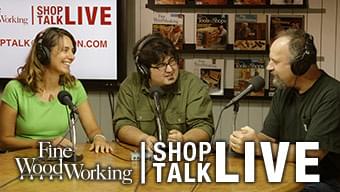 Shop Talk Live Podcast
Shop Talk Live Podcast -
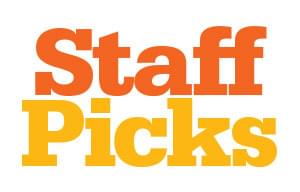 Our favorite articles and videos
Our favorite articles and videos -
E-Learning Courses from Fine Woodworking
-
-
 Fine Woodworking New England Event
Fine Woodworking New England Event -
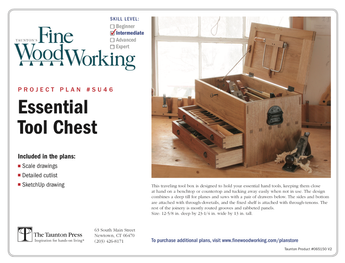
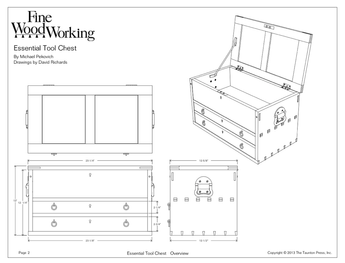
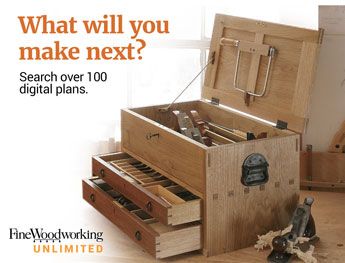
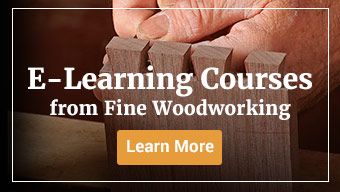








Replies
It's easy to spend 100 hours
It's easy to spend 100 hours finding, bidding for, buying and then reconditioning an old plane into something useful. If you pay yourself $4/hour for doing so, but don't actually do it, you just paid for your Lie Nielsen. ;-)
Not a Jointer as such, but I see some Stanely/Bailey's #4 around once-in-awhile. I have one. It works! And with the original blade and chipper. My jointer is a big and long old wood one. I have no idea who made it. I usually just rip the 'stick' straight and take it over to my electric jointer for good luck.
Mike,
While I can't answer
Mike,
While I can't answer any of your questions, I will mention that neither the jack or jointer are used to take gossamer-thin shavings, so they do not need to be the most tuned-up planes in your arsenal. If you use a smoother, I would suggest that, being budget-conscious, you look for planes that have flat soles and are otherwise workable. I guess what I am saying is that you don't need either of these planes to be capable of extremely-fine work.
I've got five stanley bench
I've got five stanley bench planes in my collection (#3-#7) aside from a woodie plough, rebate, #90 Stanley sholder, couple of blocks. By spending many hours on the Benchers, lapping in the frogs, flattening the soles, going fussy with flattening the backs of the blades and honing the chip breakers. I've come up with some very sweet working planes. Can get down to .0005 shavings if necessary but the is ridiculous in practicality. And have spent from $10-$35 each. So why spend more than necessary if they work well.
I also have an assortment of old stanley planes, which have been brought back to working condition. You can sometimes find them at antique stores, junke shops, and of course online. You can expect to pay $100+ for a bedrock on an online auction, but you will not know the exact condition. Chances are that you will need to tune it up anyway.
Bruce: What have you found to work the best for flattening the soles?
Ideally, a cradle and a surface grinder. But, I use a large 1/2" piece of float glass and silicon carbide W/D paper and plane them flat. Test the plane first for flatness first with 120 grit and either go up or down the grit scale depending on how much metal you have to remove. I usually end up at 800 or 1200 and get a very mirror like finish. But the is way over kill.
montee,
The cheapest plane you can buy is a Lie Nielsen. I have long believed this, and pushed this here on Knots. Look on Ebay. Lie Nielsen tools usually sell for almost current retail value, even if they are older. So you can actually make money on Lie Nielsens.
If you buy an old Stanley for $100, then you will be tempted to get a new Hock blade and chip breaker for it. You will have to spend many hours to flatten the sole of your old Stanley regardless of whether it is a Bailey or a Bedrock. It took me about six hours to do a #7.
I enjoyed fettling the #7. I learned a lot. I have used it for years. I have a number of Lie Nielsen planes now. What I have learned, besides how to fettle old planes, is that from the point of view of performance and price, is that you are far better off with Lie Nielsens. From a life cycle point of view, Lie Nielsens are FREE. I know that a Highly fettled old Bedrock with a replacement blade works very well, I really like the feel of the Lie Nielsens.
Notice that I haven't mentioned the hundreds of hours you will spend looking for and bidding on old tools, and the fact that you will end up "learning" and buying a few things that were not as good as you had hoped.
You have to decide for yourself if that is the way you enjoy spending your time. Personally I would rather go with a "sure thing", and a Lie Nielsen plane is about as close to a sure thing as there is in woodworking.
Chris said that a jack plane is not used to take fine shavings so you don't to worry about it so much. I couldn't disagree more. I recommend the LN 5 1/2 as the first plane for a woodworker to buy. You can get an extra blade, and you can use it as a super smoother, a jointer, or a fore plane (taking a larger cut). Some people, like Charlesworth think you can do almost everything with a Jack plane. Another well known woodworker did almost all of his planing with a #7.
So skill is important. Whatever you get, you need to practice, practice, practice.
I hope this helps. Let us know what you decide on.
Mel
Some people, like Charlesworth think you can do almost everything with a Jack plane. Another well known woodworker did almost all of his planing with a #7.
When I was about eight, I watched Danny Zech suck a piece of spaghetti up his nose deliberately.
When he fell on the floor and started gagging, vomiting and choking, my conclusion was that just because you CAN do something doesn't necessarily make it a good idea.
Y'hear that Mel? Did ya hear
Y'hear that Mel? Did ya hear what Jammersix said? Sorry, I'm a bit wound up from having just finished reworking my website.
I did say that the jack plane is designed to take coarse shavings (or something to that extent), but by no means is it not capable of taking a smoothing cut if set up properly. Heck, I just recently bought a blade so that I can use my #4 smoother. I also have a #4-1/2 smoother, but don't particularly like the miniscule toe it has. I did say not to worry about getting a well-tuned jack because he already has a few planes, one of which I believe (think) is capable of smoothing. Henceforth, I do not think it is necessary to pay extra moolah to acquire a jack capable of taking a fine shaving.
Interesting comment on the Lie Nielsens. I wonder how many woodworkers buy based on the resale value. That point has never crossed my mind, and now that it has, I still think no more of it. Maybe it's because I know I'll get my money's worth out of it by the time I give it up.
CHris,
I am surprised that you didn't know that I have been saying for years that Lie Nielsen tools are FREE (in the "life cycle cost" sense. You can buy them, use them, sell them on EBay, and only be out a few bucks. A few times here on Knots, we have had forums focussed on why that is the case. In many countries in which there is a VAT (Value Added Tax), it is cheaper for someone to buy a LN Plane on EBay than to buy it locally and pay the VAT.
I have wondered why the same is not true of Lee Valley planes, which are also of high quality. My belief is that it is because of the "design philosopny" that Veritas taken. They have gone for very "new" features rather than sticking with the more traditional designs. I believe that although Derek has reviewed all of them and found them to all be great, the rest of the world has not yet digested these new designs. The Lees have made a gutsy move with this design philosophy, and I admire them for it, but I am distinctly a traditionalist, as is the design philosophy of LN. That is not to say that LN has not made big changes. They have, obviously and of course.
Here is an example: LN still has the old standard mechanism for shoulder planes. LV has added in some adjusting screws to make it easier, so that when you remove the iron to hone it, you don't have to adjust it when you put it back in. IS THAT A GOOD THING? I think not. They solved a non-problem. ANyone can learn to adjust a LN or an antique shoulder plane easily and quickly. If you give a newbie these "training wheels", they may never be able to operate in someone else's shop. They will only be able to work successfully with their own tools.
THIS IS NOT GOOD. My definition of a "good woodworker" is one who can make masterpieces in someone else's shop". THat is harder to work your way up to if you have been using tools with training wheels such as the LV shoulder planes and the magnetic bench plane fences that LV makes and sells.
I believe it is because of things like this that the more traditional approach of Lie Nielsen has created such a cachet that even old LN tools consistently sell for near current retail on EBay.
I have seen Veritas tools sell on EBAY for close to current retail, but it is a much rarer thing. With Lie Nielsen, it occurs many times a day. It is a rule, rather than an exception.
You responded to my statement that Lie Nielsen tools are FREE in a life cycle cost sense by asking why anyone would consider that when buying a tool. Many others have asked the same question.
To me, once you think about it, the question of why think about the liquidity of the market for that tool is a very sane thing to consider. If I had my choice between two tools which were identical in every way except that one of them could surely be sold, if and when you wanted to, for the current retail price, and the other would sell at a much reduced price or might not sell for a long while, then the only sane thing to do is to take the one with liquidity. That is true for anything you buy in life (any non consummable, that is).
I have bought tools and decided years later that I would rather have a different tool, only to find that I couldn't find a buyer for the tool.
Sooner or later, you will die. When that happens, your estate will either sell your tools or give them to the beneficiary you names. In either case, you would be better off with a tool with liquidity that one without.
Hope that explanation helps. I have never argued with anyone about this. Others have argued amongst themselves. to me this is like being asked if you'd like to receive a dollar or a hundred thousand dollars, tax free, and there is no cost or strings attached. There is only one answer. Only a fool would argue about it.
In time, Lee Valley may attain the cachet that Lie Nielsen already has in the worldwide market, but that time is not here yet.
Have fun.
Mel
Mel,
Oh, I'm sure I have
Mel,
Oh, I'm sure I have heard you talk about "free" LN tools, but just don't recall that.
You could be very right in that it's the radical design of Veritas planes that lessens their resale value. Perhaps that is due to the more traditional appearance, the lack of "training wheels" as you call them, the materials used, or something else. By the way, I've never looked for used planes, so I am taking your word that LNs have a higher resale value than Veritas. I did notice that someone here on Knots (wingdoctor, perhaps?) was selling four planes and was asking nearly full price for the Veritas and LN planes. I don't know what he got for them though.
For the sake of argument and to give you something to think about (not because I own Veritas planes or that I am a LV employee), the adjusting screws (set screws) you speak of - could they not be equated to evolution? Maybe for someone who does not need them and can set the blade almost automatically on any plane, it is of little advantage. But are the set screws really no different from a honing guide? I learned to sharpen using a honing guide first before teaching myself how to sharpen freehand. Your talk of not being able to operate in someone else's shop is an interesting one, which seems reminiscent of the discussion a while back on whether jigs and guides are considered cheating. Somewhere else in this thread, someone quoted somebody else (Garrett Hack, I think) on saying that a plane is simply a jig that holds the blade at a set angle while the worker focuses on moving it across the stock.
Perhaps a better way to phrase that is: Are these examples crutches or luxuries? I believe that technology is great. However, reliance on technology is awful. Can you imagine what would happen if the internet just did not work for one day?
I believe that there are two ways you can learn. You can either learn without the aid of any guides and jigs, then later, once you have done so, you can learn to work with the guides and jigs. Taking this road, I think that the learning curve would be steeper and perhaps more frustrating. Or you could first learn with the guides and jigs, and once you build your confidence, continue learning and try working without the guides and jigs. This path, I think, would have a much more moderate learning curve. However, the acquisition of the guides and jigs would likely be more costly (either time making them or money buying them). I wonder how we would fare if the North Americans traded shops with the Europeans. We'd have to adapt to short fences on the table saw, and could spend all day looking for a clamp and all we'd find are cramps! The Europeans would have to cope with making wide crosscuts on sleds and perhaps our "hobbyist-grade" tools. Of course, I am generalizing here to make a point - no matter how skilled you are, I don't think it's possible to make a smooth transition from one shop to another, especially if the tools and philosophies are different. How about swapping shops with a Japanese craftsman?
Chris,
Don't let anything I
Chris,
Don't let anything I said bother you. If I worked for LV, I would buy LV tools. THey are top quality.
It is time to put this one to bed.
Have fun.
Make a masterpiece.
Mel
"How about swapping shops with a Japanese craftsman?"
Those guys have a lot more "Pull" than users of American/English style tools. ;-)
Regarding planes, could we be called "push-overs" compared to the Japanese?
Being called "push-overs" is probably better than "pushy". ;-)
Mike:
It depends on what you want the jack and jointer planes for. Jack planes are typically used as a "rough" tool to remove a lot of stock quickly to make a panel glue up or rough board face generally flat. This is followed by the jointer to finish flatten the panel or board. The jointer is also used to straighten the edges of boards for panel glue ups. Old Stanley Bailey planes are certainly good enough to handle these tasks. I own a bunch of tuned up old Stanleys and for years they have given me good service. The jointer will take more work to tune up than the jack plane. A hundred bucks should get you both planes. Another hundred and twenty or so will upgrade the irons and chipbreakers in both to either Hock or Lie-Nielsen replacements. That's $220 total cash outlay plus a lot of your time finding the planes and tuning them up.
I own a Lie-Nielsen #7, it's a great tool, so is his #5 1/2. The advantage of the Lie-Nielsen's is that you can get a 50 or 55 degree frog (which can be used with either plane) to help you go after more figured hardwoods. The total cost of the Lie-Nielsens is $800 plus tax and/or shipping (not including an extra high angle frog which is $75). All you will need to do to these planes to get them working is hone the irons. Only you can decide if difference in price is worth it. Let me also add that if you are new to planes, it is hard to know when you have one tuned up enough to give peak performance. Another advantage of the Lie-Nielsens is that they perform as well as any Bailey style plane can right out of the box.
gdblake
You might consider springing for a Lie-Nielsen #4 they really are worth the money. As for the #7 I got a very clean Millersfall #22 which is the same size as a Stanley #7 then put a better blade on it. I have the Millersfall and it works great. You can often find a #22 for a very low price on e-bay. Also look for a KeenKutter K7 not a KK7 this is the same design as the original Stanley Bedrock.
Good luck
Troy
Thanks to everyone for responses to original post. Much food for thought. Legitimate arguments. I think I'll look for second hand planes and put some work into them. If I'm not satisfied with results will move on. Mentioned by many is replacing the blade and cap irons. Why so, If one can remove rust and owns a honing guide and stones? Are the replacements far superior to originals?
Thanks
Mike
"Mentioned by many is replacing the blade and cap irons. Why so"
Hock and Lie Nielsen irons and chippers are far superior to most of what was installed originally, at least in the recent past. Some would say they can turn a "Gravel Gerty" into an opera singer. Try sharpening what you get, however, and then make your decision.
Mike:
I think it was Thomas Lie-Nielsen who said "a plane is just a jig to hold a chisel". After all, it is the iron that does the cutting, not the plane body. In the case of vintage Stanley planes there are three reasons for up grading to a new, thicker iron. 1. Generally speaking, thick plane irons out perform thin ones. This is mainly because a thick iron is able to absorb more of the force involved in taking a shaving, less vibration means less chance of chatter. 2. Using a thicker iron also has the effect of closing up the mouth which helps avoid tearout (this doesn't really apply to a jack plane that is configured to take thick shavings). 3. The steels in the replace irons from Hock, Lie-Nielsen, and others are more durable than the Stanley irons (some would add that they can also be sharpened to a finer edge, but I haven't found this to be true for me in regards to Stanley irons).
I think the bottom line is to start with the irons that come with the planes. Sharpen them up and use the planes. If you get the results you are after, don't waste the money. Otherwise a replacement iron plus chipbreaker should improve the plane's performance.
gdblake
Thanks. Point taken. See these older bench planes with both smooth and corrugated soles. Any significant pros or cons? I've read corrugated are easier to flatten and easier to push. True? Shouldn't be a deal breaker would think.
Thanks
Mike
Mike,
Corrugated soles are certainly quicker to flatten because there is about 30% less material to remove. One thing against corrugated soles - the grooves can get caught on the corners/edges of stock if you approach it at an angle, such as when chamfering. No, I would not consider it to be a deal maker or breaker.
I would like to second the notion that the Lie-Nielsen planes are often actually cheaper than old Bedrocks or Bailey planes if you value your time. I've done it both ways several times. I've never bought an old cast iron plane that had a truly flat sole, and I've never bought a Lie-Nielsen one that required any significant correction. It is especially chancy if you use an on-line auction to purchase an old plane--you won't have any way to tell how much time and effort will be needed to get the thing functioning properly until you have it in your hands. Bedrock planes also seem to sell at a considerable premium because of their appeal to collectors, but the Lie-Nielsen planes are better than the Bedrocks ever were--better machining, heavier irons, etc. The only "bargains" one is likely to find that way are the old Baileys which don't generate the same frenzied bidding.
That said, there is one way to relatively quickly get an old Bailey or Bedrock up and running again, if it is basically sound. Steve Nisbett, in Wheaton Illinois will machine the sole of a cast iron plane flat to a very fine tolerance, and remachine the frog too, if needed. I recently sent him an old Bailey #4 1/2 that was out of flat by more than .005" and for about $65 he trued the sole and frog (sole flat to .0012"). The plane now performs on par with the Lie-Nielsen smoother that I also own, but without the laborious hand-lapping that would have taken many hours otherwise. Including the hock replacement iron, shipping, cost of the plane, etc. I probably have half the cost of a new LN 4 1/2 invested. Nisbett can be contacted at [email protected].
jackmaggs
jack,
very interesting. did not know such a service existed. one question: how does mr. nisbett deal with the mouth of the plane? does it not need tuning to accommodate the thicker hock?
eef
eef,
In this case he did not deal with the mouth at all, although for an additional charge he will apparently do that sort of work if you want. I've never encountered a need to do anything other than shift the frog to the proper position to accommodate one of the slightly thicker (.094") aftermarket irons in a Bailey style plane, and I have several set up that way. I did recently need to file the mouth of an old Miller's Falls smoother when I decided to use the Lie-Nielsen replacement iron for their #4 in it--the LN iron I think is .125" thick, and the old planes won't work without modification.
When I got the Bailey 4 1/2 back from Mr. Nisbett, I spent about 15 minutes with a tiny bit of lapping, which got the plane to essentially perfectly flat according to my Starrett straight-edge, and another 5 adjusting the mouth to a very fine setting, and I was in business with a very effective tool. I think it is a pretty convenient solution if you have any old iron planes around that are less than satisfactory in their current state.
jackmaggs
Mike:
Personally, I don't
Mike:
Personally, I don't like corugated soles for the reason already mentioned. There are others who love them. I have two Stanley #5s one with and the other without. In use I can't tell any performance difference between the two. More important is the casting and general milling of an old Stanley. Many will tell you to look for planes built in the early 1900s. The frogs in these planes have full beds compared to later planes where the bed has been milled to consist of ribs. I have planes with both types of frogs and again can't tell a difference in performance between the two. Where I can tell a difference in performance is in the thickness of the main casting. I've had better luck with planes from the early 1940s because the castings are thicker and heavier than the other years.
gdblake
Mike--I strongly suggest you
Mike—I strongly suggest you check out Walt's offerings at Brass City Records and Tools. Here's the url: http://www.brasscityrecords.com/ Click on old tools in the left-hand column.
I bought a 1930s Stanley #7 from Walt, and I still use it almost daily. He knows his tools and stands behind what he sells. He won't sell you anything that you can't use pretty much immediately, and best of all, his prices are often lower than those driven up by eBay bidding.
I agree that Lie-Nielsen planes pay for themselves in the long run—I've picked up a couple of block planes, a scrub, and a shoulder plane from LN over the last few years—but for many of us the long run is a luxury, and cash in hand is precious. If you do buy an old Stanley, preferably pre-WWII, try to buy thicker irons for them from Lie-Neilsen or Ron Hock when you've got a few more dollars.
Maybe it's me, but the value of working with a plane that has been used by a couple of generations before me is also worth a lot. Tradition, after all, is important to craftsmanship.
Norman
This forum post is now archived. Commenting has been disabled